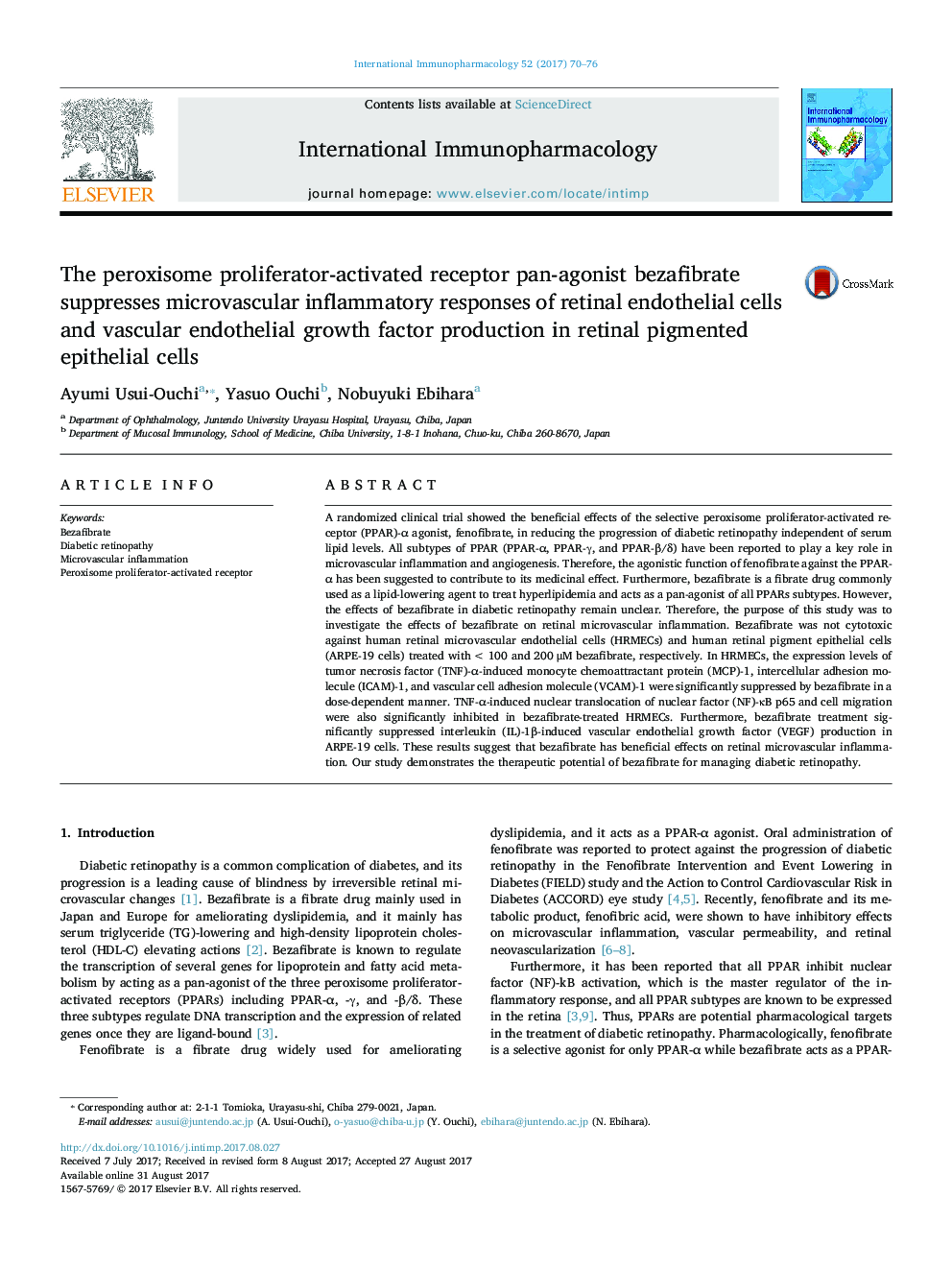| کد مقاله | کد نشریه | سال انتشار | مقاله انگلیسی | نسخه تمام متن |
|---|---|---|---|---|
| 5555243 | 1559738 | 2017 | 7 صفحه PDF | دانلود رایگان |
- PPAR pan-agonist action of bezafibrate was studied in diabetic retinopathy models.
- Bezafibrate suppressed retinal microvascular inflammation and proliferation.
- Bezafibrate suppressed upregulated chemokine and adhesion molecule levels in cells.
- Bezafibrate suppressed upregulated VEGF level in retinal pigment epithelial cell.
- Bezafibrate has potential for treating diabetic retinopathy.
A randomized clinical trial showed the beneficial effects of the selective peroxisome proliferator-activated receptor (PPAR)-α agonist, fenofibrate, in reducing the progression of diabetic retinopathy independent of serum lipid levels. All subtypes of PPAR (PPAR-α, PPAR-γ, and PPAR-β/δ) have been reported to play a key role in microvascular inflammation and angiogenesis. Therefore, the agonistic function of fenofibrate against the PPAR-α has been suggested to contribute to its medicinal effect. Furthermore, bezafibrate is a fibrate drug commonly used as a lipid-lowering agent to treat hyperlipidemia and acts as a pan-agonist of all PPARs subtypes. However, the effects of bezafibrate in diabetic retinopathy remain unclear. Therefore, the purpose of this study was to investigate the effects of bezafibrate on retinal microvascular inflammation. Bezafibrate was not cytotoxic against human retinal microvascular endothelial cells (HRMECs) and human retinal pigment epithelial cells (ARPE-19 cells) treated with < 100 and 200 μM bezafibrate, respectively. In HRMECs, the expression levels of tumor necrosis factor (TNF)-α-induced monocyte chemoattractant protein (MCP)-1, intercellular adhesion molecule (ICAM)-1, and vascular cell adhesion molecule (VCAM)-1 were significantly suppressed by bezafibrate in a dose-dependent manner. TNF-α-induced nuclear translocation of nuclear factor (NF)-κB p65 and cell migration were also significantly inhibited in bezafibrate-treated HRMECs. Furthermore, bezafibrate treatment significantly suppressed interleukin (IL)-1β-induced vascular endothelial growth factor (VEGF) production in ARPE-19 cells. These results suggest that bezafibrate has beneficial effects on retinal microvascular inflammation. Our study demonstrates the therapeutic potential of bezafibrate for managing diabetic retinopathy.
Journal: International Immunopharmacology - Volume 52, November 2017, Pages 70-76
